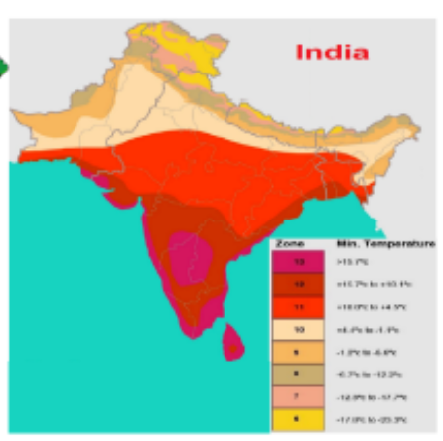


Indian Journal of Science and Technology
Year: 2023, Volume: 16, Issue: 24, Pages: 1787-1794
Original Article
Sagar M Gawande1*, Dilip D Sarode2
1PhD research Scholar, Department of General Engineering, ICT Mumbai
2Professor, Department of General Engineering, ICT Mumbai
*Corresponding Author
Email: [email protected]
Received Date:06 April 2023, Accepted Date:31 May 2023, Published Date:19 June 2023
Objectives: The purpose of this study is to identify plant species that are effective in phytoremediation based on their ability to withstand various hardiness zones. This study also intends to clarify how to choose plant species appropriate for phytoremediation based on those species’ capacity to adapt to various hardiness zones. The end goal of this project is to develop effective phytoremediation strategies that can help to mitigate the negative environmental consequences of wastewater. Methods: The USDA Hardiness Zone Map and literature on phytoremediation were used to obtain data from a variety of sources. Data analysis to find plant species that can flourish in various hardiness zones and their potential for application in phytoremediation processes. Findings: In various hardiness zones, many plant species, including but not limited to cattails, water hyacinths, and duckweeds, demonstrate extraordinary potential for phytoremediation. Due to their innate ability to absorb and store toxins, these species are able to efficiently remove pollutants from wastewater. Novelty: This study offers important information on choosing plant species for phytoremediation depending on how well they adapt to various hardiness zones. The data can be utilized to create efficient phytoremediation strategies that reduce the adverse environmental consequences of wastewater. The current study is significant since it assesses the suitability of several plant species for phytoremediation based on their tolerance of various hardiness zones. To assist reduce the negative environmental consequences of wastewater, efficient phytoremediation solutions can be developed using the data from this study.
Keywords: Hardiness Zone; USDA; Plant Species; Phytoremediation; Plant Inventory
© 2023 Gawande & Sarode. This is an open-access article distributed under the terms of the Creative Commons Attribution License, which permits unrestricted use, distribution, and reproduction in any medium, provided the original author and source are credited. Published By Indian Society for Education and Environment (iSee)
Subscribe now for latest articles and news.